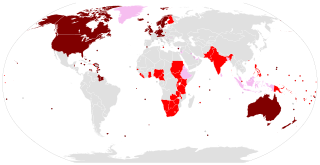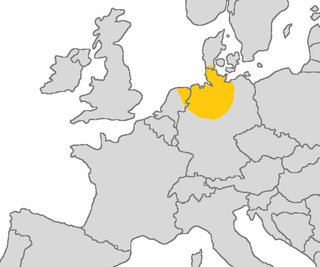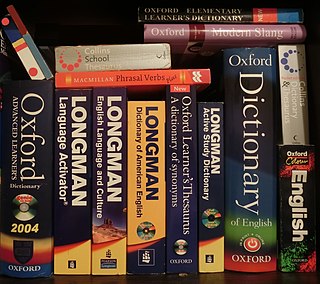
The Germanic languages are a branch of the Indo-European language family spoken natively by a population of about 515 million people mainly in Europe, North America, Oceania and Southern Africa. The most widely spoken Germanic language, English, is also the world's most widely spoken language with an estimated 2 billion speakers. All Germanic languages are derived from Proto-Germanic, spoken in Iron Age Scandinavia.

Norwegian is a North Germanic language spoken mainly in Norway, where it is an official language. Along with Swedish and Danish, Norwegian forms a dialect continuum of more or less mutually intelligible local and regional varieties; some Norwegian and Swedish dialects, in particular, are very close. These Scandinavian languages, together with Faroese and Icelandic as well as some extinct languages, constitute the North Germanic languages. Faroese and Icelandic are not mutually intelligible with Norwegian in their spoken form because continental Scandinavian has diverged from them. While the two Germanic languages with the greatest numbers of speakers, English and German, have close similarities with Norwegian, neither is mutually intelligible with it. Norwegian is a descendant of Old Norse, the common language of the Germanic peoples living in Scandinavia during the Viking Age.
The Germanic umlaut is a type of linguistic umlaut in which a back vowel changes to the associated front vowel (fronting) or a front vowel becomes closer to (raising) when the following syllable contains, , or.
In linguistics and etymology, suppletion is traditionally understood as the use of one word as the inflected form of another word when the two words are not cognate. For those learning a language, suppletive forms will be seen as "irregular" or even "highly irregular".
Nynorsk is one of the two written standards of the Norwegian language, the other being Bokmål. From 12 May 1885, it became the state-sanctioned version of Ivar Aasen's standard Norwegian language parallel to the Dano-Norwegian written language (Riksmål). Nynorsk became the name in 1929, and it is after a series of reforms still a variation which is closer to Landsmål, whereas Bokmål is closer to Riksmål and Danish.
In the Germanic languages, weak verbs are by far the largest group of verbs, are therefore often regarded as the norm. They are distinguished from the Germanic strong verbs by the fact that their past tense form is marked by an inflection containing a, , or /ð/ sound rather than by changing the verb's root vowel.

Proto-Germanic is the reconstructed proto-language of the Germanic branch of the Indo-European languages.

Old Saxon, also known as Old Low German, was a Germanic language and the earliest recorded form of Low German/Northern Low Saxon. It is a West Germanic language, closely related to the Anglo-Frisian languages. It is documented from the 8th century until the 12th century, when it gradually evolved into Middle Low German. It was spoken throughout modern northwestern Germany, primarily in the coastal regions and in the eastern Netherlands by Saxons, a Germanic tribe that inhabited the region of Saxony. It partially shares Anglo-Frisian's Ingvaeonic nasal spirant law which sets it apart from Low Franconian and Irminonic languages, such as Dutch, Luxembourgish and German.
Swedish is descended from Old Norse. Compared to its progenitor, Swedish grammar is much less characterized by inflection. Modern Swedish has two genders and no longer conjugates verbs based on person or number. Its nouns have lost the morphological distinction between nominative and accusative cases that denoted grammatical subject and object in Old Norse in favor of marking by word order. Swedish uses some inflection with nouns, adjectives, and verbs. It is generally a subject–verb–object (SVO) language with V2 word order.
In grammar, the term weak is used in opposition to the term strong (stark) to designate a conjugation or declension when a language has two parallel systems. The only constant feature in all the grammatical usages of the word "weak" is that it forms a polarity with "strong"; there is not necessarily any objective "weakness" about the forms so designated.
In the Germanic languages, a strong verb is a verb that marks its past tense by means of changes to the stem vowel (ablaut). The majority of the remaining verbs form the past tense by means of a dental suffix, and are known as weak verbs.
Proto-Indo-European verbs reflect a complex system of morphology, more complicated than the substantive, with verbs categorized according to their aspect, using multiple grammatical moods and voices, and being conjugated according to person, number and tense. In addition to finite forms thus formed, non-finite forms such as participles are also extensively used.

The English language has many irregular verbs, approaching 200 in normal use—and significantly more if prefixed forms are counted. In most cases, the irregularity concerns the past tense or the past participle.
A nonfinite verb is a verb that is not finite. Nonfinite verbs cannot perform action as the root of an independent clause. Most nonfinite verbs found in English are infinitives, participles and gerunds. Additional nonfinite forms found in some other languages include converbs, gerundives and supines.
The grammar of Old English is quite different from that of Modern English, predominantly by being much more inflected. As an old Germanic language, Old English has a morphological system that is similar to that of the Proto-Germanic reconstruction, retaining many of the inflections thought to have been common in Proto-Indo-European and also including constructions characteristic of the Germanic daughter languages such as the umlaut.

In linguistic morphology, inflection is a process of word formation, in which a word is modified to express different grammatical categories such as tense, case, voice, aspect, person, number, gender, mood, animacy, and definiteness. The inflection of verbs is called conjugation, and one can refer to the inflection of nouns, adjectives, adverbs, pronouns, determiners, participles, prepositions and postpositions, numerals, articles etc., as declension.
Old Norse has three categories of verbs and two categories of nouns. Conjugation and declension are carried out by a mix of inflection and two nonconcatenative morphological processes: umlaut, a backness-based alteration to the root vowel; and ablaut, a replacement of the root vowel, in verbs.
Historical linguistics has made tentative postulations about and multiple varyingly different reconstructions of Proto-Germanic grammar, as inherited from Proto-Indo-European grammar. All reconstructed forms are marked with an asterisk (*).
A regular verb is any verb whose conjugation follows the typical pattern, or one of the typical patterns, of the language to which it belongs. A verb whose conjugation follows a different pattern is called an irregular verb.
The grammar of Old Saxon is highly inflected, similar to that of Old English or Latin. As an ancient Germanic language, the morphological system of Old Saxon is similar to that of the hypothetical Proto-Germanic reconstruction, retaining many of the inflections thought to have been common in Proto-Indo-European and also including characteristically Germanic constructions such as the umlaut. Among living languages, Old Saxon morphology most closely resembles that of modern High German.





